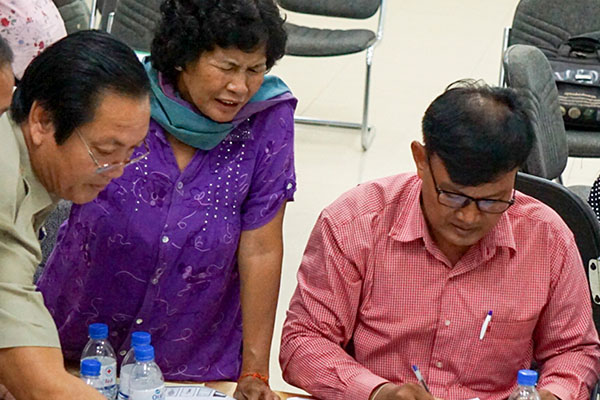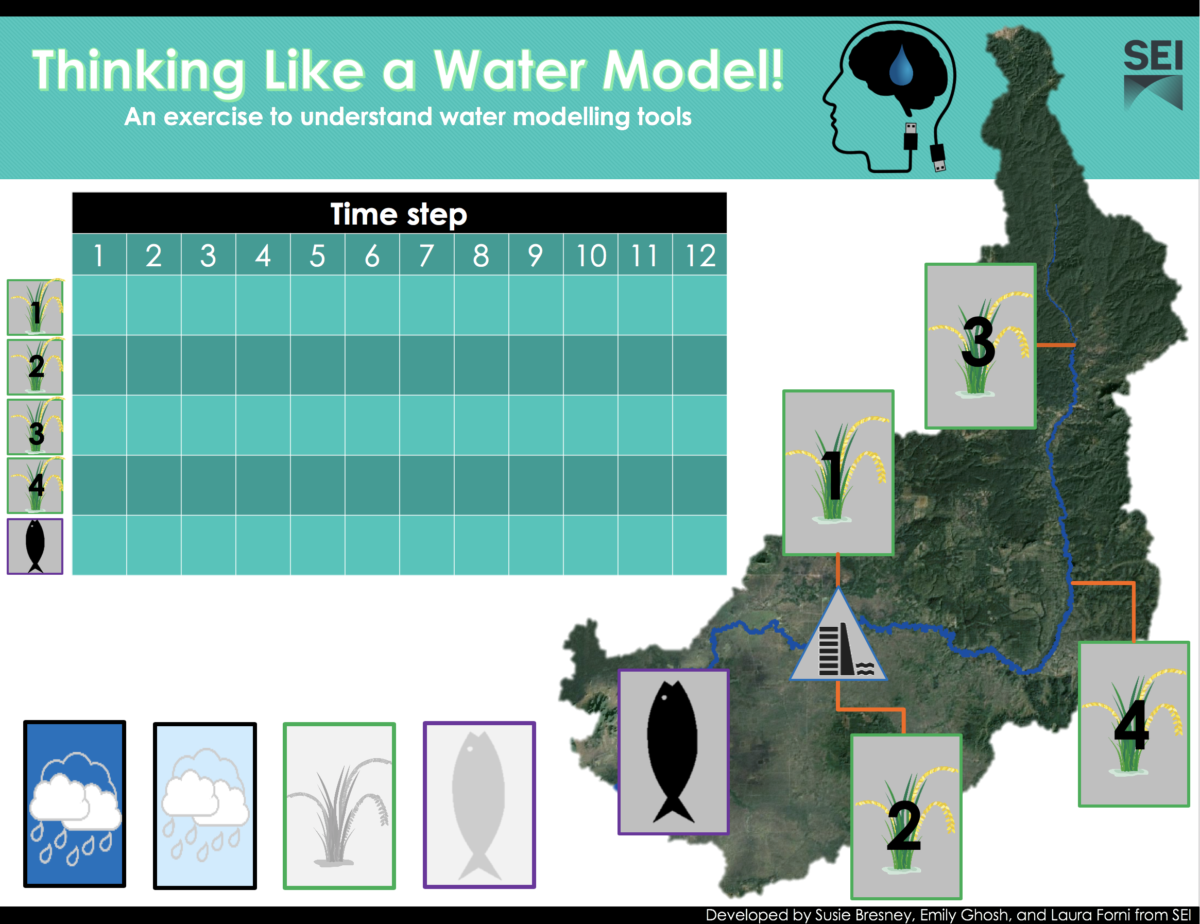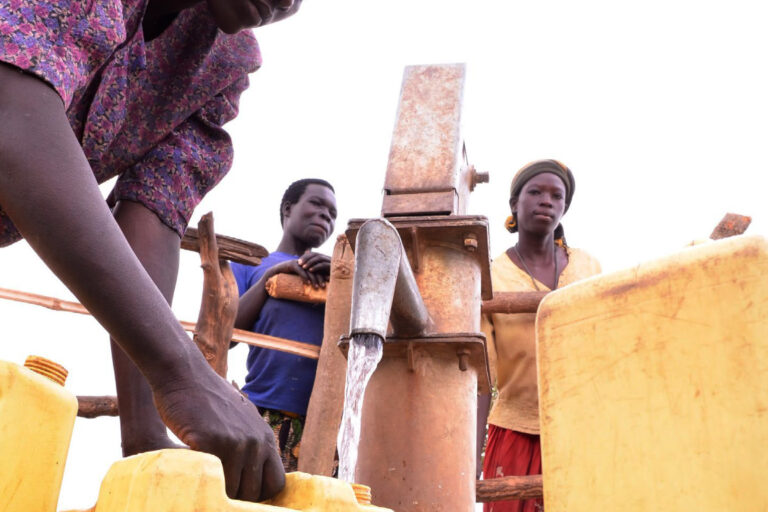
Thinking Like a Water Model
An innovative water management exercise fosters hands-on learning in SWP’s Cambodia activity.
In the Stung Chinit basin of Cambodia, rice farmers and fishermen depend on the same water. More rice means more water diverted from the river – and if too much water is diverted, unhealthy river flows lead to fewer fish.
But that doesn’t mean the two sectors must be at odds. Last month, my colleagues at the Sustainable Water Partnership (SWP) and I proved that with a simple but crucial step: inviting farmers, fishermen and residents to all sit in a room together and see the impacts and trade-offs of water allocation choices.
This Vulnerability Workshop was part of the Robust Decision Support process that the Stockholm Environment Institute uses throughout the world to encourage sustainable water planning and cross-sectoral participation. Our team of researchers has hosted hundreds of workshops that use SEI’s Water Evaluation and Planning (WEAP) software to show policy-makers and stakeholders the effect of water resource policies over time.
But this meeting – held in Kampong Thom – posed a unique challenge. In our usual workshops, we show time series data from WEAP and start building a shared conceptual model with the audience. This time, however, our audience was not familiar with models and time series.
Our challenge was to first construct a shared mental model – one that mimicked the software – and then to convey why WEAP and other water resources models are important to use. We did this through a video and a creative exercise, both developed by my colleague, SEI Scientist Susie Bresney.
The animated video (created using Animaker) explained how basin components – such as cities, farms, and reservoirs – are represented as objects in a model to obtain a schematic structure of the basin. Narrated in Khmer, the video used the Stung Chinit watershed as the example, so the audience was able to recognize the river and components.
After the video, we asked the audience to participate in the exercise for hands-on learning. Each table of 10 participants, along with a local translator, received a large poster of the Stung Chinit watershed. The objective of the exercise was to score the most points by planting rice – but while keeping river flows healthy enough to support fish. Participants had the option of storing water in the reservoir.

The cards and sequence were separated into two types: wet season and dry season. The exercise consisted of drawing one card per time period, with each card representing the units of water available for that month. Participants would then decide, by moving pieces around the poster, how they would allocate water to the various demands, and how much water they would keep in their reservoirs and rivers. They also had to fill in a table for each season and year to complete their own “time series.”
The exercise was structured to represent the basin complexities. In the wet season, for example, they had plenty of water. But in the dry season, participants had to prioritize between keeping enough water for fish and producing rice, knowing that they would get more points if they produce rice.
 After the exercise, we used an interactive visualization tool called Tableau to show the results of our scenario analyses in WEAP. With the exercise and video as their foundation, workshop participants were then able to understand the model’s output and provide feedback on the results.
After the exercise, we used an interactive visualization tool called Tableau to show the results of our scenario analyses in WEAP. With the exercise and video as their foundation, workshop participants were then able to understand the model’s output and provide feedback on the results.
The experience led to an easier discussion about the difficult choices ahead. For example, farmers would like to increase rice production by 10 percent. Our results showed that this was possible during the wet season (one cycle of rice production) but not during the dry season (two cycles). Yet many farmers are already planting rice all year round.
The workshop was a fantastic experience. People really engaged, and we were able to connect their experience in the exercise with model results from WEAP, particularly when it came to the idea of trade-offs.
“The exercise helped me to think about water allocation, especially water availability versus demands,” said participant Sin Srey, a member of a local Farmer Water User Committee. “I realized that we cannot only focus on farming, but at the same time we also need to pay more attention to allocate some water for fish.”
Our work will continue in the region, with an evaluation of the options for managing the water in a way that can maintain these economic activities sustainably. The more we collaborate with stakeholders – and the better understanding we cultivate between all sectors – the closer we get to our goal of supporting good decisions that lead to sustainability in both ecosystems and economic development.
Laura Forni is a Staff Scientist with SEI US. She is an agricultural and resources economist. Her graduate research work integrated WEAP with an economic model developed by Richard Howitt at the University of California-Davis. Laura’s research focused on a new integration method for economic and hydrological models incorporating farmers’ regional water valuation functions from the State Wide Agricultural Production Model (SWAP) into the WEAP application for the Sacramento Basin in California. Her interdisciplinary work has resulted on a project at SEI regarding economic assessment of climate change for the entire Central Valley in California with the objective of applying this new integration method.
Related Projects

